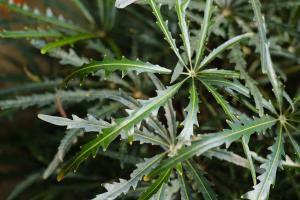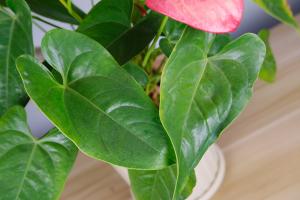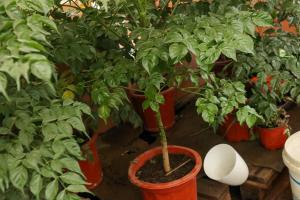What Is Eating My Tomato Plant Flowers
Tomatoes are one of the most commonly grown vegetable plants in home gardens. They are easy to grow and produce delicious, juicy fruits that are perfect for salads or sauces. However, tomato plants are also vulnerable to a range of pests and diseases that can damage or even kill the plant. One of the most frustrating problems that tomato growers encounter is the disappearance of their tomato plant flowers. In this article, we will discuss the most common causes of disappearing tomato flowers and how to prevent them from happening.
Pollination Issues
Tomato plants require proper pollination to produce fruit, and without pollination, the flowers will drop off the plant. In some cases, the plant may even stop producing flowers altogether. In areas with high humidity or where there is a lack of bees, wasps or other pollinators, hand-pollination may be necessary. You can use a small brush or a cotton swab to transfer pollen from one flower to another, ensuring that the plant produces fruit.
Pest Problems
Pests like aphids, spider mites, whiteflies, and thrips can feed on tomato plant flowers causing them to drop off. Aphids and spider mites are tiny insects that suck sap from the plant, causing damage or deformities in the flowers. Whiteflies, on the other hand, excrete a sticky substance that attracts mold and can kill the flowers. Lastly, thrips feed on flower parts and cause distortion, discoloration, and scarring of flowers. To control these pests, you can use natural methods like spraying neem oil or insecticidal soap, or you can use chemical insecticides. Always read the label of any product used and follow instructions carefully.
Disease Issues
Diseases like bacterial wilt, gray mold, and fungal diseases can also cause tomato plant flowers to drop off. Bacterial wilt is a bacterial disease that enters the plant through the roots and moves up through the stem, causing it to wilt and die. Gray mold, on the other hand, is a fungal disease that causes grayish-brown spots on the leaves and stems, eventually leading to complete plant decay. To prevent these diseases, it is essential to maintain good garden hygiene, prune the plant regularly, and avoid overcrowding. Applying fungicides or copper spray can also help prevent or control the spread of fungal diseases.
Environmental Factors
Environmental factors such as high temperatures, low humidity, or lack of water can cause stress on tomato plants that can lead to flower drop. To prevent this, tomato plants require a well-drained soil, full sun exposure, and adequate watering. Providing shade during the hottest part of the day, especially during heatwaves or droughts, can also help prevent stress on the plant.
Conclusion
In conclusion, tomato plant flowers can drop off due to various reasons, including pollination issues, pest problems, disease issues, or environmental factors. By keeping your garden clean and healthy, providing proper care, and promptly addressing any problems that occur, you can help ensure a healthy and fruitful tomato plant. Remember to always read the label of any product used and follow instructions carefully, especially when using chemical insecticides or fungicides.

 how many times do yo...
how many times do yo... how many planted tre...
how many planted tre... how many pine trees ...
how many pine trees ... how many pecan trees...
how many pecan trees... how many plants comp...
how many plants comp... how many plants can ...
how many plants can ... how many plants and ...
how many plants and ... how many pepper plan...
how many pepper plan...
































